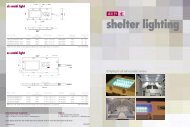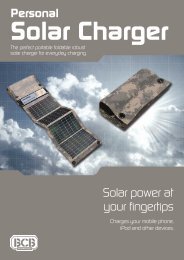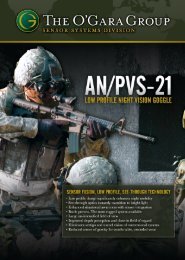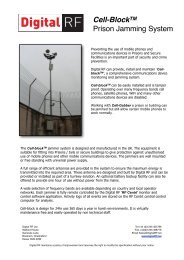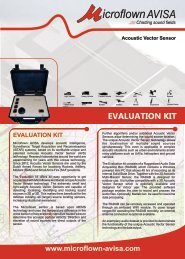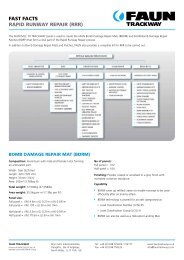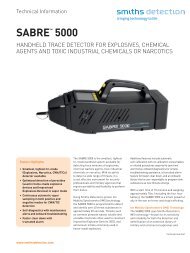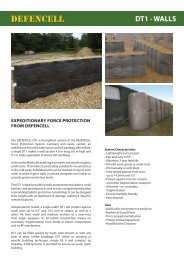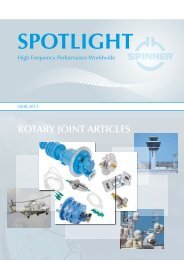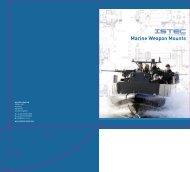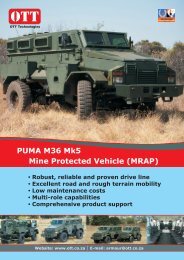Catalog 300 - Kaydon Bearings
Catalog 300 - Kaydon Bearings
Catalog 300 - Kaydon Bearings
You also want an ePaper? Increase the reach of your titles
YUMPU automatically turns print PDFs into web optimized ePapers that Google loves.
REALI-SLIM ® <strong>Bearings</strong> <strong>Catalog</strong> <strong>300</strong> ©KAYDON ® Corporation Issue 10<br />
Bearing Selection (continued)<br />
Section 3–Applications Engineering<br />
Referring to Figure 3-9, an axial force applied to the<br />
inner race from right to left is passed from the race to<br />
the ball at point B. It is then transmitted through the<br />
ball to point D where it passes into the outer race and<br />
support structure. The line of action BD forms a<br />
nominal 30° angle with the radial centerline of the<br />
bearing. Because of the elastic deformation of the<br />
ball and the race grooves along the load-transmission<br />
line, the ball load is relieved at points A and C,<br />
permitting smooth rotation around an axis<br />
perpendicular to line BD. With an axial force applied<br />
to the inner race from left to right, a similar<br />
transmission of load occurs between points C and A.<br />
combination of thrust and radial bearings, either ball<br />
or roller.<br />
As in the case of the Type C bearing, Type X bearings<br />
are normally supplied with diametral clearance. The<br />
latter bearing, however, is not dependent upon this<br />
clearance for its nominal contact angle and thrust<br />
capacity. On the contrary, where thrust or moment<br />
loading is considerable, the clearance should be<br />
minimized to prevent the angle of contact from<br />
becoming excessive. For many applications requiring<br />
greater stiffness, Type X bearings are furnished with an<br />
internal preload. This is accomplished by using balls<br />
larger in diameter than the space provided between<br />
the raceways. The balls and raceways in this case have<br />
some elastic deformation without the presence of<br />
external load.<br />
NOTE: Type X <strong>Bearings</strong> are designed to be used<br />
singularly. Use of two Type X bearings on a common<br />
shaft could result in objectionable friction torque.<br />
Figure 3-9<br />
Moment or Overturning Load<br />
A moment or overturning load is similar to two thrust<br />
loads acting in opposite directions at diametrically<br />
opposite sides of the bearing. With a moment load, the<br />
loading on one side of the bearing will pass from point<br />
B to D, relieving points A and C. Directly across the<br />
bearing, the load passes from point C to point A,<br />
relieving points B and D.<br />
A radial load is resisted equally across the lines of<br />
contact CA and BD. Under combined loading the<br />
resistance is along both lines of contact with the<br />
magnitude of each reaction dependent upon the<br />
relationship of the individual loads.<br />
By its ability to resist radial, thrust, and moment loads<br />
in any combination, the Type X bearing is often able<br />
to replace two bearings—a pair of angular contact<br />
ball bearings, a pair of tapered roller bearings, or a<br />
70 | www.kaydonbearings.com 1-800-514-3066



